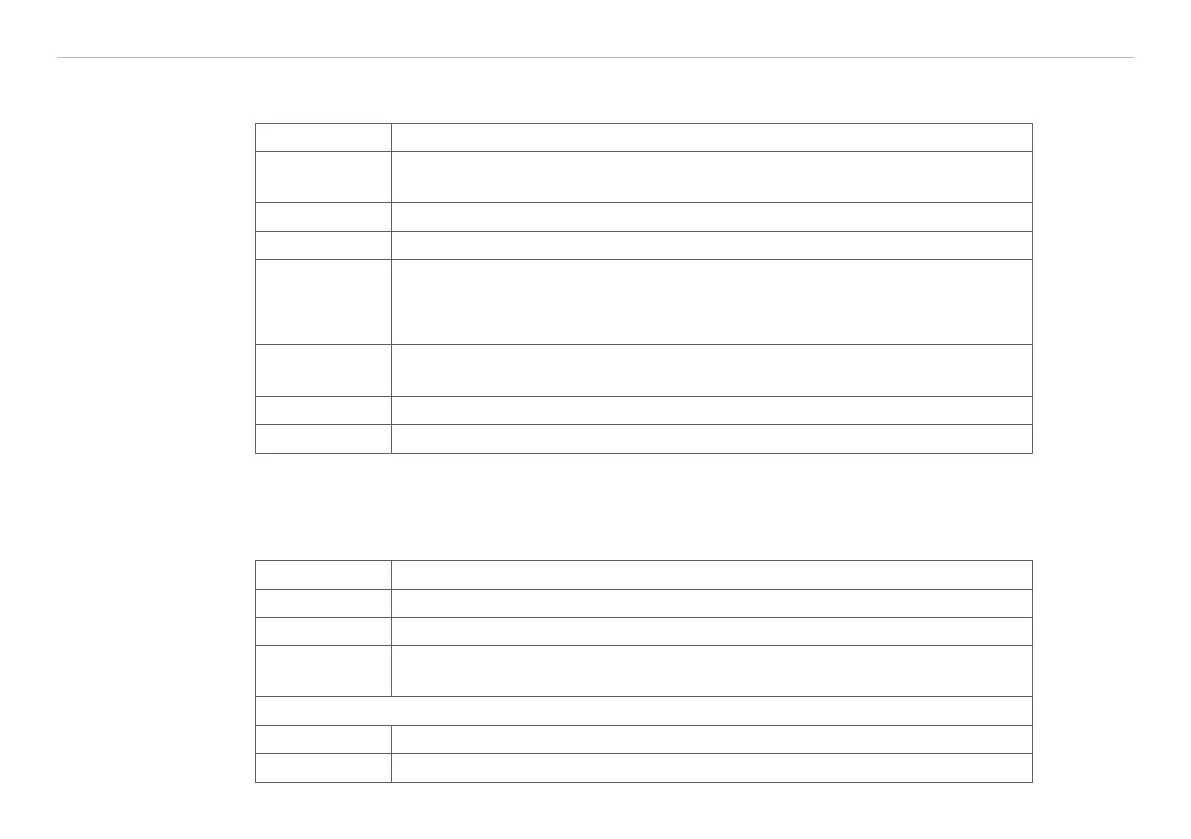Page 69
Ethernet Interface
capaNCDT 6200
6.4.15 Ethernet Settings (IPS)
Changes the IP settings of the controller.
IPS
Command $IPSm,<IPAddress>,<SubnetAddress,<GatewayAddress>
<CR>
Example $IPS0,169.254.168.150,255.255.0.0,169.254.168.1<CR>
Response $IPSm,<IPAddress>,<SubnetAddress>,<GatewayAddress>OK<CRLF>
Index m = 0: static IP address
m = 1: activates DHCP*
* If DHCP is active, no IP subnet- and gateway address has to be transmitted.
Request
settings
Command $IPS?
Response $IPS? m,<IPAddress>,<SubnetAddress>,<GatewayAddress>OK<CRLF>
6.4.16 Change between Ethernet and EtherCAT (IFC = Interface)
Command switches between Ethernet and EtherCAT interface. Effective only, if the switch Ethernet/
EtherCAT is in the position ECAT/Auto. Otherwise always the Ethernet interface is active. The new interface
is activated after a restart of the controller.
IFC
Command $IFCm<CR> Example: $IFC1<CR>
Response $IFCmOK<CRLF>
Index m = 0: Ethernet
m = 1: EtherCAT
Request
Command $IFC?
Response $IFC?mOK<CRLF>

